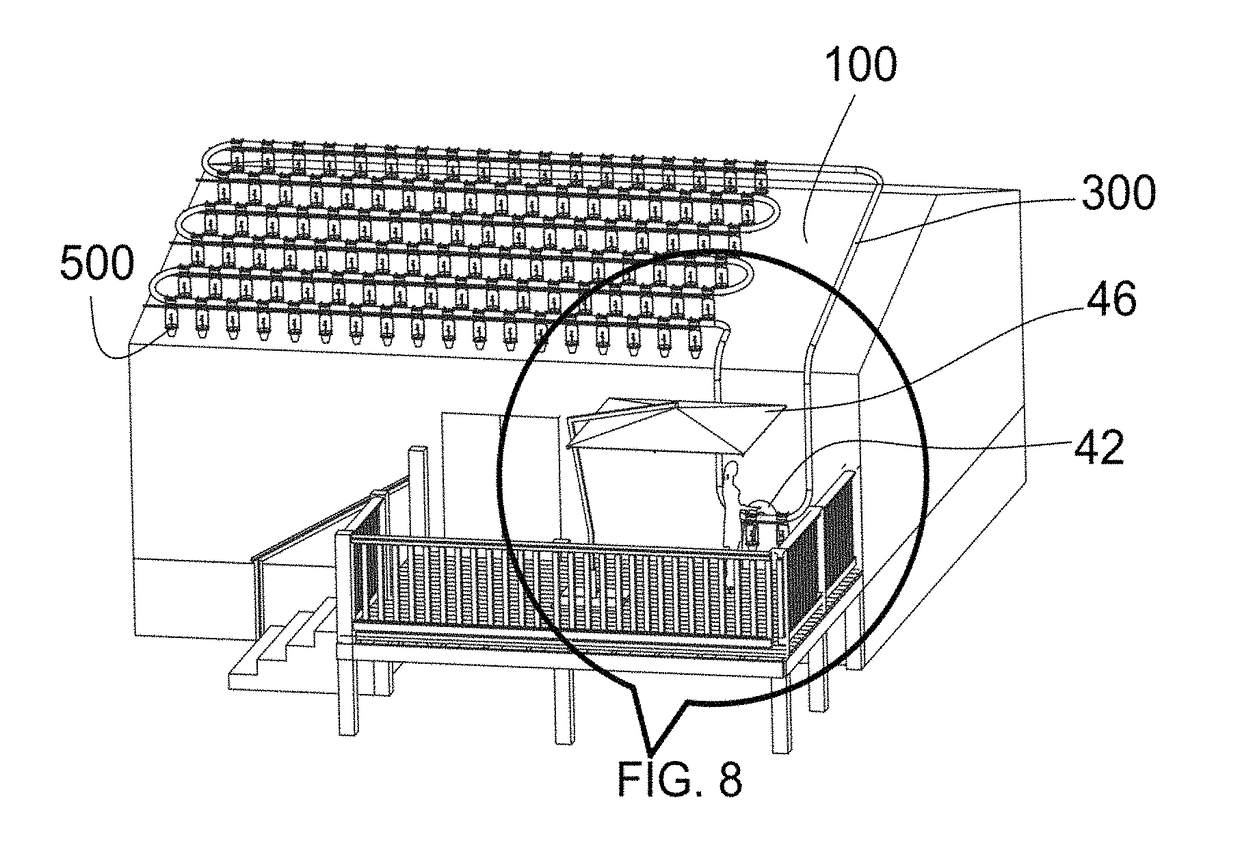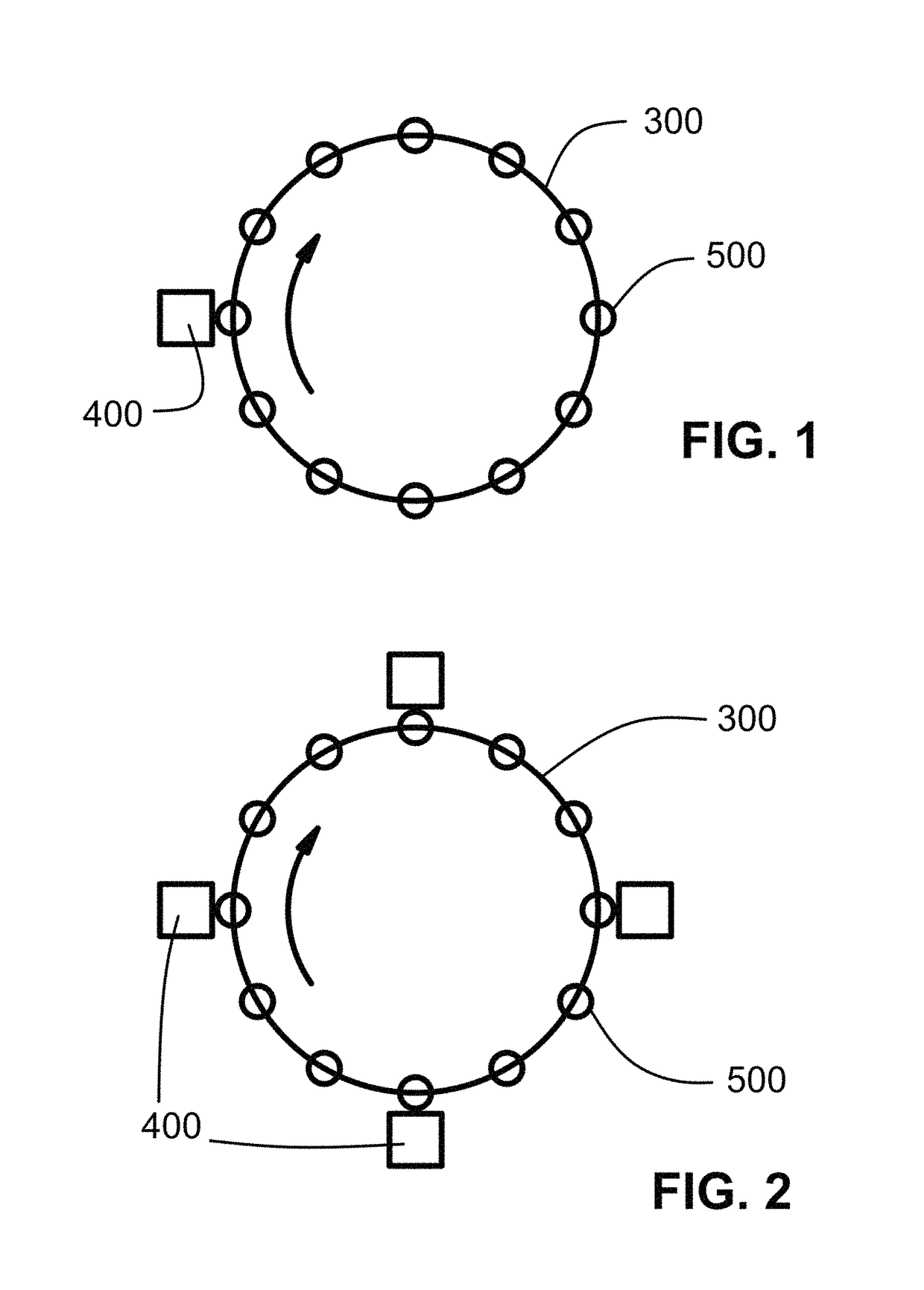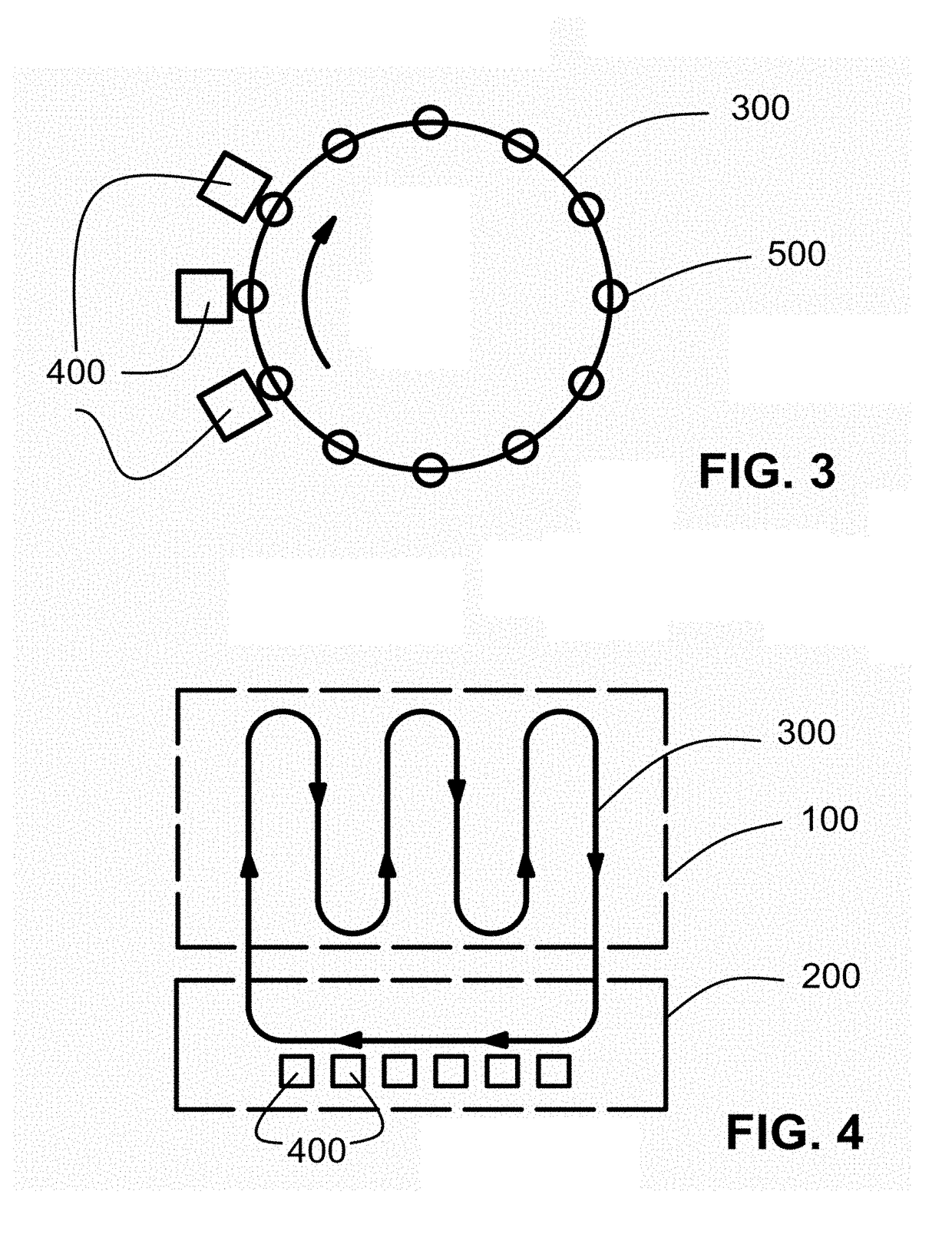Central processing horticulture
a technology of horticulture and processing equipment, applied in the field of central processing equipment for horticulture, can solve the problems of consuming more resources and energy for loading/unloading plants on conveyors, and achieve the effect of consuming more resources and energy
- Summary
- Abstract
- Description
- Claims
- Application Information
AI Technical Summary
Benefits of technology
Problems solved by technology
Method used
Image
Examples
Embodiment Construction
[0072]FIG. 1 shows the line diagram of the plant-cultivation system according to current invention. A resource 400, such as human or machine is positioned to execute the plant process. A conveyor with its path 300 is designed to pass close to the resource 400. The plant-containers with the plants represented by 500 are held on the conveyor.
[0073]When it is time to do the plant process on the plants, the conveyor is operated so that each plant container 500 is positioned close to the resource 400 one after the other. The resource 400 executes the plant processes sequentially and the cycle is completed when all plants undergo the plant process. The whole cycle is repeated every time that plant processes needs to be executed, thus aiding central processing of repetitive plant process.
[0074]The repetitive process could be the daily watering, administration of nutrients, pruning, inspecting, harvesting, etc. as applicable based on the time of the day, age of the plant, etc. Depending on ...
PUM
 Login to View More
Login to View More Abstract
Description
Claims
Application Information
 Login to View More
Login to View More - R&D
- Intellectual Property
- Life Sciences
- Materials
- Tech Scout
- Unparalleled Data Quality
- Higher Quality Content
- 60% Fewer Hallucinations
Browse by: Latest US Patents, China's latest patents, Technical Efficacy Thesaurus, Application Domain, Technology Topic, Popular Technical Reports.
© 2025 PatSnap. All rights reserved.Legal|Privacy policy|Modern Slavery Act Transparency Statement|Sitemap|About US| Contact US: help@patsnap.com



